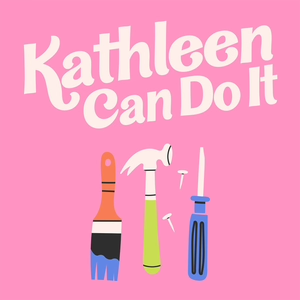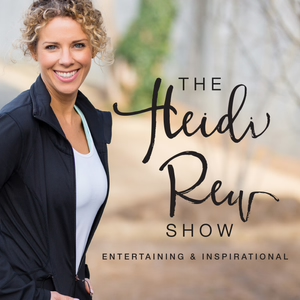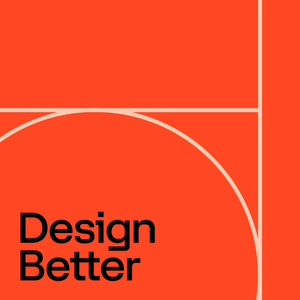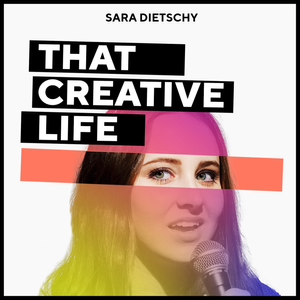
Whangarei Urban
07/05/18 • 20 min
EPISODE SUMMARY: On this episode of Indigenous Urbanism, we visit Whangarei, Northland’s largest city to examine the role of carvers, visual artists and planners in creatively interpreting our cultural narratives and re-inscribing our identity as tangata whenua into the urban fabric.
GUESTS: Bernadette Aperahama, Te Warihi Hetaraka, David Badham
FULL TRANSCRIPT:
Jade Kake: Whangarei-Terenga-Paraoa. Named for the meeting place of the chiefs, and the historic waiting place of Reipae. But when you look around Whangarei City, there isn’t much that locates us and reflects our identity as tangata whenua.
Bernadette Aperahama: I don’t see that Whangarei, visually, looks like a Māori City. I mean the people, of course. It's not represented in the built environment, and that's sad to me. It must sad for our people, and it must sad for our tangata whenua. How do they see themselves in the actual City?
JK: That was Bernadette Aperahama, nō Ngāti kahu ki Whangaroa raua ko Te Arawa. Bernadette is a planner living and working in Whangarei.
BA: I think there is quite a lot to change in terms of how we enable Māori to be represented in this whole district, from an actual governance representation in our political landscape within local government, all the way through staff, within government agencies, seeing more Māori faces in here, and building the capacity of staff to work with Māori, all the way through to having in a proactive space a values system, and having our tangata whenua represented in the entire spectrum. We’re really lacking in that
I don’t see Māori in the built environment, if that's where the focus is. and I don't think the hau kāinga would see themselves in the built environment. And I don't think our hau kāinga would see themselves having much influence at this stage through the entire development of what this City looks.
JK: Tēnā koutou katoa
Nau mai haere mai ki te Indigenous Urbanism, Aotearoa Edition, Episode three.
I’m your host Jade Kake and this is Indigenous Urbanism, stories about the spaces we inhabit, and the community drivers and practitioners who are shaping those environments and decolonising through design.
On this episode of Indigenous Urbanism we visit Whangarei, Northland’s largest city, to examine the role of carvers, visual artists and planners in creatively re-interpreting our cultural narratives and re-inscribing our identity as tangata whenua into the urban fabric.
To learn more about the potential for expression of tangata whenua identity through public art, we sat down to have a kōrero with Tohunga Whakairo Te Warihi Hetaraka.
Te Warihi Hetaraka: Ko Te Warihi Hetaraka tōku nei ingoa. Nō Whangaruru au, ahau wā i tipu ake au ki Whangaruru i whānau i ahu kei Whangarei hōhipera. My name is Te Warihi. I'm from Whangaruru. I was born in Whangarei. So yeah, Te Uri o Hikihiki. Raised out in Whangaruru. Grew up there, then left home when I was sixteen to go to Rotorua to learn whakairo. I was chosen then. That's why that connection to all the tribes is important, because when I was sent away, I was sent to represent all of the tribes or hapū of Tai Tokerau.
It’s the re-establishing of our carved meeting houses and our marae complexes that will help us regain our identity as Māori, I feel. In fact, I know it will. And it was partly the reason why I was sent away, was to bring that back to Northland.
JK: We met with Te Warihi at the site of the proposed Hihiaua cultural centre, located on the Hihiaua Peninsula in central Whangarei. The project is slated to be a significant statement of tangata whenua identity in the City, and once complete, the precinct will include a performance stage, conference centre & theatre, and an exhibition hall. Currently there’s an existing boatshed on site, which houses an office and a carving workshop.
TWH: The idea of developing the cultural centre came from our rangatira and our elders, Whangarei back in the day. It first started around about 1980, but they didn't really start to talk about it until 1993, when they were developing the town basin. But the original people that raised it were Charlie Kake, Jimmy Pou, Violet Pou, Hane Kingi, Sissy Pitman. There was over forty or so kaumātua from around Whangarei. So those are just a few of the names of the elders, that's both Charlie and Ben of course, were involved at the beginning.
I think it was mostly because they saw that our younger generation weren't sort of involving themselves in their culture or their tikanga. But also that period too, kapa haka and all of that sort of stuff started to spring up. All the tikanga stuff started to drop off. So they saw the cultural centre, in their minds the cultural centre was a place where our people could re-establish their identity as Māori. It was in 1993 when the Council asked for Māori input to the development of the town bas...
EPISODE SUMMARY: On this episode of Indigenous Urbanism, we visit Whangarei, Northland’s largest city to examine the role of carvers, visual artists and planners in creatively interpreting our cultural narratives and re-inscribing our identity as tangata whenua into the urban fabric.
GUESTS: Bernadette Aperahama, Te Warihi Hetaraka, David Badham
FULL TRANSCRIPT:
Jade Kake: Whangarei-Terenga-Paraoa. Named for the meeting place of the chiefs, and the historic waiting place of Reipae. But when you look around Whangarei City, there isn’t much that locates us and reflects our identity as tangata whenua.
Bernadette Aperahama: I don’t see that Whangarei, visually, looks like a Māori City. I mean the people, of course. It's not represented in the built environment, and that's sad to me. It must sad for our people, and it must sad for our tangata whenua. How do they see themselves in the actual City?
JK: That was Bernadette Aperahama, nō Ngāti kahu ki Whangaroa raua ko Te Arawa. Bernadette is a planner living and working in Whangarei.
BA: I think there is quite a lot to change in terms of how we enable Māori to be represented in this whole district, from an actual governance representation in our political landscape within local government, all the way through staff, within government agencies, seeing more Māori faces in here, and building the capacity of staff to work with Māori, all the way through to having in a proactive space a values system, and having our tangata whenua represented in the entire spectrum. We’re really lacking in that
I don’t see Māori in the built environment, if that's where the focus is. and I don't think the hau kāinga would see themselves in the built environment. And I don't think our hau kāinga would see themselves having much influence at this stage through the entire development of what this City looks.
JK: Tēnā koutou katoa
Nau mai haere mai ki te Indigenous Urbanism, Aotearoa Edition, Episode three.
I’m your host Jade Kake and this is Indigenous Urbanism, stories about the spaces we inhabit, and the community drivers and practitioners who are shaping those environments and decolonising through design.
On this episode of Indigenous Urbanism we visit Whangarei, Northland’s largest city, to examine the role of carvers, visual artists and planners in creatively re-interpreting our cultural narratives and re-inscribing our identity as tangata whenua into the urban fabric.
To learn more about the potential for expression of tangata whenua identity through public art, we sat down to have a kōrero with Tohunga Whakairo Te Warihi Hetaraka.
Te Warihi Hetaraka: Ko Te Warihi Hetaraka tōku nei ingoa. Nō Whangaruru au, ahau wā i tipu ake au ki Whangaruru i whānau i ahu kei Whangarei hōhipera. My name is Te Warihi. I'm from Whangaruru. I was born in Whangarei. So yeah, Te Uri o Hikihiki. Raised out in Whangaruru. Grew up there, then left home when I was sixteen to go to Rotorua to learn whakairo. I was chosen then. That's why that connection to all the tribes is important, because when I was sent away, I was sent to represent all of the tribes or hapū of Tai Tokerau.
It’s the re-establishing of our carved meeting houses and our marae complexes that will help us regain our identity as Māori, I feel. In fact, I know it will. And it was partly the reason why I was sent away, was to bring that back to Northland.
JK: We met with Te Warihi at the site of the proposed Hihiaua cultural centre, located on the Hihiaua Peninsula in central Whangarei. The project is slated to be a significant statement of tangata whenua identity in the City, and once complete, the precinct will include a performance stage, conference centre & theatre, and an exhibition hall. Currently there’s an existing boatshed on site, which houses an office and a carving workshop.
TWH: The idea of developing the cultural centre came from our rangatira and our elders, Whangarei back in the day. It first started around about 1980, but they didn't really start to talk about it until 1993, when they were developing the town basin. But the original people that raised it were Charlie Kake, Jimmy Pou, Violet Pou, Hane Kingi, Sissy Pitman. There was over forty or so kaumātua from around Whangarei. So those are just a few of the names of the elders, that's both Charlie and Ben of course, were involved at the beginning.
I think it was mostly because they saw that our younger generation weren't sort of involving themselves in their culture or their tikanga. But also that period too, kapa haka and all of that sort of stuff started to spring up. All the tikanga stuff started to drop off. So they saw the cultural centre, in their minds the cultural centre was a place where our people could re-establish their identity as Māori. It was in 1993 when the Council asked for Māori input to the development of the town bas...
Previous Episode
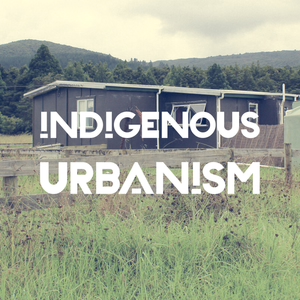
Kaihū Housing Repairs
EPISODE SUMMARY: On this episode of Indigenous Urbanism, we travel to the Kaihū in the Kaipara to learn about a tribal-led programme to improve living conditions for whānau through essential housing and infrastructure repairs.
GUESTS: Mihiata Te Rore, Tania Moriarty
FULL TRANSCRIPT:
Jade Kake: Poor quality housing is just one of the realities of living in rural Northland. For many of our hau kāinga, the pride and sense of identity associated with living on their own whenua is often coupled with the challenges of keeping their whare warm, dry, and safe for their whānau.
Mihiata Te Rore: Here as we walk into the kitchen, I had a couple of jacks underneath the house here because that was a bit unstable so that the fridge would wobble, and the stove would wobble.
JK: Have the piles rotted away or something like that?
MTR: I don't know, it's not the piles, because the house has only been here for ten years, it was actually the actual boards
JK: It might have been the bearers, or the joists, if it's not the posts themselves
MTR: Yeah it's not these ones, it was the ones that run underneath the house
JK: Have they rotted?
MTR: They were rotted, the were rotted. Like, there was one that went along here I think, and it was just totally rotten, and it went one along here
JK: So you had to replace that with the car jacks
MTR: Yes, this whole floor has been replaced, but prior to that it was three jacks along here, I think maybe 3-4 jacks, and that was just holding it up
JK: Tēnā koutou katoa
Nau mai haere mai ki te Indigenous Urbanism, Aotearoa Edition, Episode two.
I’m your host Jade Kake and this is Indigenous Urbanism, stories about the spaces we inhabit, and the community drivers and practitioners who are shaping those environments and decolonising through design.
On this episode of Indigenous Urbanism: We visit Mihiata Te Rore nō Te Uri o Hau [delete] at her whare on ancestral Māori land in Kaihū, located in the Kaipara district of Te Tai Tokerau. Patrick Gemmell reports.
Ko Mihiata Te Rore ahau, ko Kaihū tuturu kāinga, ko Kaihū te awa, ko Maunganui te maunga, ko Ripiroa te moana, Te Roro te iwi.
Patrick Gemmell: I guess we want to start with whereabouts we are in the world, and a little bit of your upbringing here in Kaihū
MTR: Yeah I'm in Kaihū, we're about 30km north of Dargaville, and more or less at the foot of the Waipoua Forest, that's going towards north. I was practically born and raised here. Sort of came away from down the line, from Tokoroa, and came here when I was about 6. My father brought us home, nine of us, all nine children. And I was sort of raised here in the area. And got older, moved away. Father passed away and then we all sort of moved away, got married. And some of us came home, some of us didn't, and I decided about ten years ago that I was coming home.
PG: Coming home is one thing, but coming home to where your ancestors have been brought up and back to your own Māori land, how important was it to you to come back to that as well?
MTR: It was very important. That was one of my main feelings to come home. You just feel it, it's ancestral land, this goes back to, I must be the 5th, 6th generation. I've got grandchildren, and they've all been here as well.
The land is here, the chief here was Te Rore, and from Te Rore he came down from Taho, and that's one of the rangatira for this area, for Te Roro. And from Taho, Te Rore, which is my tūpuna. And from him was Raniera, and he's buried over here, that's the third chief down, and that's my great-grandfather, so. My grandfather was raised here, my father was raised here, I've been raised here, I've raised my children here, so, that's quite a... that's a major legacy to me. And to actually be able to come home, and be here.
PG: What were some of the motivating things that really drove you to come back and put this whare back on the land, and when you did that, what were some of the issues that you ran into?
MTR: If I go back to almost 30 years ago, I'm 55 this year, I would have been 16, 17 years old when I eventually left this area, got married, and then came back. It was only the homestead, and another relative way down there. His house, down there. These were the only houses here. These ones in between the one over there, they weren't here, but as the years went by whānau came home, and it just felt that sense of belonging, the need to come house. Because my father had passed away, and the need to come home was stronger as I got older and my kids started to get older and my mokopuna arrived. That was the need that pulled me home. And be part of the valley, to be part of the land. Like that bush up there, I still remember years, when we were children, and our father would take us to there, and we were all self-sustained. We didn't buy butter, we made butter....
Next Episode
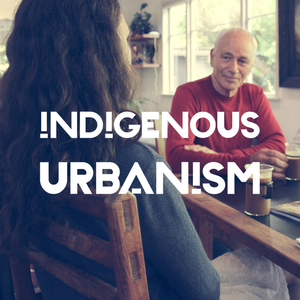
In Conversation with Carin Wilson
EPISODE SUMMARY: On this episode of Indigenous Urbanism, we speak with Carin Wilson, a Ngāti Awa artist, designer and craftsperson, whose urban and built works include public and private projects with a cultural focus, frequently created in collaboration with architects, designers and other artists.
GUESTS: Carin Wilson
FULL TRANSCRIPT:
Jade Kake: Tēnā koutou katoa
Nau mai haere mai ki te Indigenous Urbanism, Aotearoa Edition, Episode 4.
I’m your host Jade Kake and this is Indigenous Urbanism, stories about the spaces we inhabit, and the community drivers and practitioners who are shaping those environments and decolonising through design.
On this episode of Indigenous Urbanism we speak with Carin Wilson, a Ngāti Awa artist, designer and craftsperson with studios in Te Tai Tokerau and Tāmaki Makaurau. Carin’s urban and built works include the origination and development of public and private projects with a cultural focus, frequently in collaboration with architects, designers and other artists.
Carin is a significant figure in New Zealand art and design, and has had a career in the arts spanning more than four decades.
We sat down with Carin at his home in Mt Albert to discuss his life and his work.
Ko wai koe? Nō hea koe?
Carin Wilson: Ko Pūtauaki te maunga, Ko Mātaatua te waka, Ngāti Awa te iwi, Ko Te Awa o Te Atua te awa, Ko Moutohorā te motu, Ko Te Rangihouhiri te hapū, Ko Tiaki Mahiti Wirihana or Wilson tāku papa, Ko Nina Estarina Bianca di Solma tāku mama, Ko Carin Wilson ahau.
JK: Kia ora. Where to start? You've had such an interesting career spanning 40-something years and you've done all sorts of really amazing things. But what I thought I'd start with is, how did you end up in this area of design, and craftsmanship, and art, and architecture, and all those things meshed together. Yeah, where did it all start?
CW: It started with questions about what's making sense. So my dad had, while he flew fighter aircrafts in the Pacific, he actually studied for a law degree when he got back from the war. And the conversation in my family from as early as I can remember was that I would study law. And I did. I went to Victoria, and Canterbury, and studied law for 3 years, got half a degree. But by the time I'd got that far down the path I just knew that it wasn't going to be a lifetime's commitment for me. I just couldn't. There's not enough creativity or, I couldn't measure the potential for creativity at that stage of my life. I possibly could have taken a different view if I was more mature.
But what I was looking for was a connection, and I can kind of describe that connection now as between the head, the hands and the heart. And I wasn't finding it in what I was discovering the use of law in our society. So, how do I go about this? There's no training, no formal training available. But, I couldn't resist the inquiry about understanding materials, and putting things together, and putting materials together, and it could have been anything at that stage. But I discovered this deep affinity and connection with timber, with the rakau, the wood. And that was the moment that it all changed for me. I discovered a material that I loved, I discovered that what lived in that material was what I would now call the mauri, because I understand what that means. But I certainly didn't at that time. It spoke to me, and it's quite weird but deep spiritual connection and I've always been interested in that dimension of our lives. So to go on exploring that, and see what came out of it, by working with the rakau, with the timber, and fashioning anything with it. Just as a way of engaging deeply with it, was the beginning of that journey.
JK: I think that's really beautiful, because even when we don't necessarily have the vocabulary or the framework to describe things, there are certain things that we understand on an intuitive level. And sometimes when you learn those things, it's kind of just like remembering things you've always known, rather than learning something new.
You were a leading figure in the crafts movement - what were some of the aims of that movement, and some of the achievements?
CW: I didn't even know that I belonged to any kind of movement. I was just doing what I was doing. It was this discovery path and I was completely absorbed in it and trying to be a father, and husband. So, my daughter Tully was 5 months old, I remember this really, really carefully, and I suddenly became aware of the fact, that here was a little life that I was partly responsible for, and, I'd better get my act together smartly, because otherwise I was going to screw up badly. So, I said to Jen look, this is something that I would really like to do. And she came back with three conditions, which was a really interesting response, and kind of set a really clear framework for us to move forward.
S...
If you like this episode you’ll love
Episode Comments
Generate a badge
Get a badge for your website that links back to this episode
<a href="https://goodpods.com/podcasts/indigenous-urbanism-68738/whangarei-urban-3641880"> <img src="https://storage.googleapis.com/goodpods-images-bucket/badges/generic-badge-1.svg" alt="listen to whangarei urban on goodpods" style="width: 225px" /> </a>
Copy

